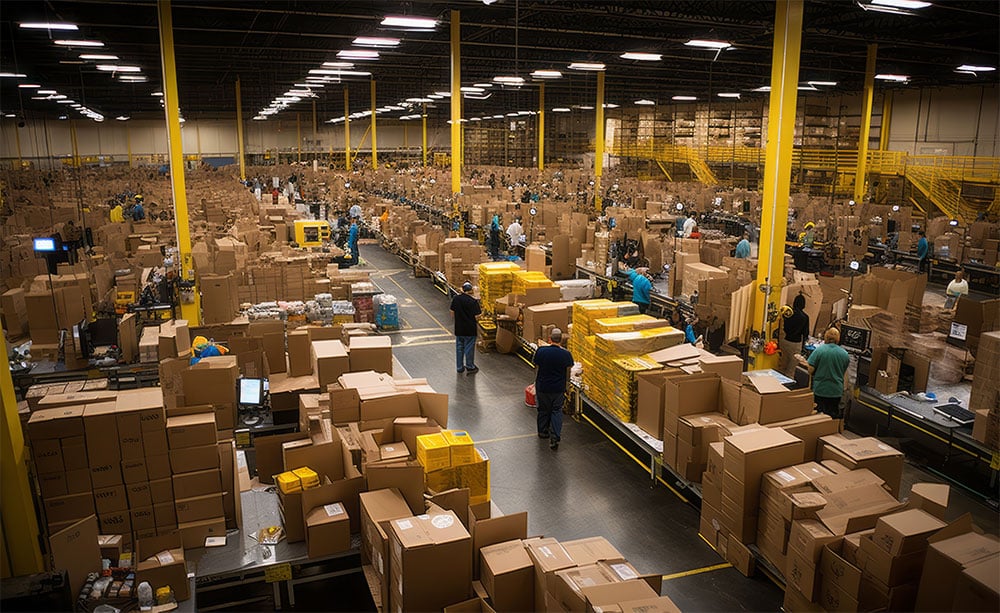 Cloud-based software deployment is essentially the process of delivering software applications, services and infrastructure over the internet. Cloud computing has gained popularity recently due to its cost-efficiency and scalability, especially for small and medium-sized businesses. Among the reasons – it requires minimal internal IT resources, seamlessly integrates with various WMS, ERP, and order management systems, and can often be implemented within 30 days, providing rapid results.
Cloud-based software deployment is essentially the process of delivering software applications, services and infrastructure over the internet. Cloud computing has gained popularity recently due to its cost-efficiency and scalability, especially for small and medium-sized businesses. Among the reasons – it requires minimal internal IT resources, seamlessly integrates with various WMS, ERP, and order management systems, and can often be implemented within 30 days, providing rapid results.
Before selecting a cloud deployment type for your business, it’s crucial to understand each of them and consider the unique advantages they can provide. Keep in mind that all software providers may not offer all options, so make sure to understand what the alternatives are as you enter into discussions with potential providers. Let’s delve into a more detailed explanation of the four deployment types.
On Premise
In this configuration, software is installed and operates on computers located at an organization’s own premises, as opposed to a remote facility. The majority of companies utilizing this option already possess an established IT infrastructure, which may include servers in a data center or a corporate data center equipped with their own servers, storage devices, networking equipment, and IT personnel. Organizations retain ownership and management responsibilities for these devices and their associated data.
The software provider simply integrates their software into this existing architecture, and the software runs on the organization’s own premises. This can also be described as a ‘self-hosted’ setup within the company’s corporate data center, sometimes referred to as their company cloud. This setup may also involve the utilization of a public cloud hosting option as part of the overall IT infrastructure.
Companies who may benefit most from an on premise deployment include:
- Large enterprises with sensitive data such as proprietary product information, customer data, or intellectual property.
- Industries that are subject to strict regulatory requirements, such as healthcare or finance, to ensure they can meet compliance standards and maintain data governance.
- Companies with complex or highly customized processes that require extensive integration with existing systems.
IaaS (Infrastructure as a Service)
This is a cloud computing service that offers essential compute, storage, and networking resources on demand, typically on a pay-as-you-go basis. It operates something like a server that runs operating system (OS) applications. It will appear transparently over the internet, as if you’re logged into servers, and you can install as many applications as you want, as long as you’re within limitations of how much compute and storage that you’ve purchased.
An essential benefit of this type of deployment is that you don’t have to buy servers, and you don’t have to worry about aspects such as regular maintenance and things like backups, etc. are significantly easier and often part of the infrastructure service.
Iaas customer profiles might include:
- E-commerce retailers who often deal with fluctuating order volumes. IaaS allows them to scale their warehouse automation infrastructure up or down based on demand.
- 3PL companies who manage logistics and warehousing for multiple clients with diverse needs. IaaS allows them to offer customizable automation solutions to different clients while managing costs effectively.
- Startups and small businesses who might not have the capital or expertise to build and maintain their warehouse infrastructure.
PaaS (Platform as a Service)
Platform as a Service (PaaS) is a cloud computing service model that provides a platform and environment for developers to build, deploy, and manage applications without the complexity of managing the underlying infrastructure. PaaS platforms provide a scalable and managed environment for hosting applications. Developers upload their code, and the PaaS provider takes care of provisioning and managing the necessary infrastructure resources, such as servers, storage, and networking, to run the applications.
PaaS platforms often include automation features for deploying and scaling applications. Developers can specify the desired number of instances, and the platform handles the provisioning of resources, load balancing, and scaling based on demand. PaaS offerings typically include database and data storage services that are fully managed. Developers can use these services to store and retrieve data for their applications without worrying about database administration tasks like backups and maintenance.
In terms of middleware and services, PaaS providers often offer middleware components and services like message queues, authentication, and caching, which can be integrated into applications. This allows developers to add functionality without building it from scratch. PaaS platforms are designed to handle the scaling of applications as traffic or workload demands change.
Developers can configure auto-scaling rules to ensure that resources are allocated efficiently. PaaS typically follows a pay-as-you-go pricing model, where users are charged based on the resources and services they consume. This can be cost-effective as it eliminates the need for upfront hardware investments.
Paas customers can have a similar profile to Iaas but can also include:
- Companies with limited IT expertise, because Paas often comes with pre-configured infrastructure and built-in support. This reduces the technical complexity and the need for extensive IT knowledge to implement and manage warehouse automation systems.
- Businesses with operations in multiple locations or countries, as it provides a standardized platform for warehouse automation across different sites.
- Cost-conscious organizations, since PaaS follows a pay-as-you-go model, which allows organizations to control costs more effectively.
SaaS (Software as a Service)
Saas allows users to connect to and use cloud-based apps over the internet. SaaS provides a complete software solution that you purchase on a pay-as-you-go basis. You “rent” the use of an application for your business, and users connect to it over the internet.
It’s often a complete software solution. Similar to infrastructure as a service, you pay as you go, but with a Saas model, you only rent the use of the application, not the servers. This is a subtle difference, but it’s an important one. For instance, you can log onto Microsoft Office in the cloud and use it. But what you don’t have access to is the underlying server, so you typically cannot install other applications.
You don’t have to maintain the server in the background, worry about backups or failover, or about interactions of other applications. You’re just getting access to that one application that’s being hosted through the cloud.
Saas customers can include:
- Global enterprises with geographically dispersed warehouse, offering centralized control and visibility across all locations and enabling streamlined management and reporting.
- Rapidly growing businesses with a need to implement a solution quickly and efficiently. SaaS eliminates the need for significant capital expenditures and often comes with user-friendly interfaces, making them accessible to teams without extensive technical expertise.
| On Premises | Infrastructure as a Service | Platform as a Service | Software as a Service |
|---|---|---|---|
| Applications | Applications | Applications | Applications |
| Data | Data | Data | Data |
| Runtime | Runtime | Runtime | Runtime |
| Middleware | Middleware | Middleware | Middleware |
| O/S | O/S | O/S | O/S |
| Virtualization | Virtualization | Virtualization | Virtualization |
| Servers | Servers | Servers | Servers |
| Storage | Storage | Storage | Storage |
| Networking | Networking | Networking | Networking |
= You manage
= Service Provider Manages
In our next post, we’ll take a deep dive into the overall benefits of cloud based solutions, including how its collaborative model can help drive AI and machine learning advantages.

Jason McElravy serves as the Principal Product Architect for Lucas Systems, with lead responsibility for ensuring that the technical architecture of Lucas’ products effectively meet the current and future needs of our clients.
Jason is a highly skilled, creative and adaptive IT leader with a passion for software development and more than 25 years of experience focusing on web and cloud architectures, with particular proficiency in digital transformation, cloud migration, solution architecture, automation and product development.
He has held multiple technical leadership positions up to and including Chief Technology Officer while remaining a hands-on technologist. Throughout his career, he has built a proven track record of using technology to implement creative solutions to business problems.





